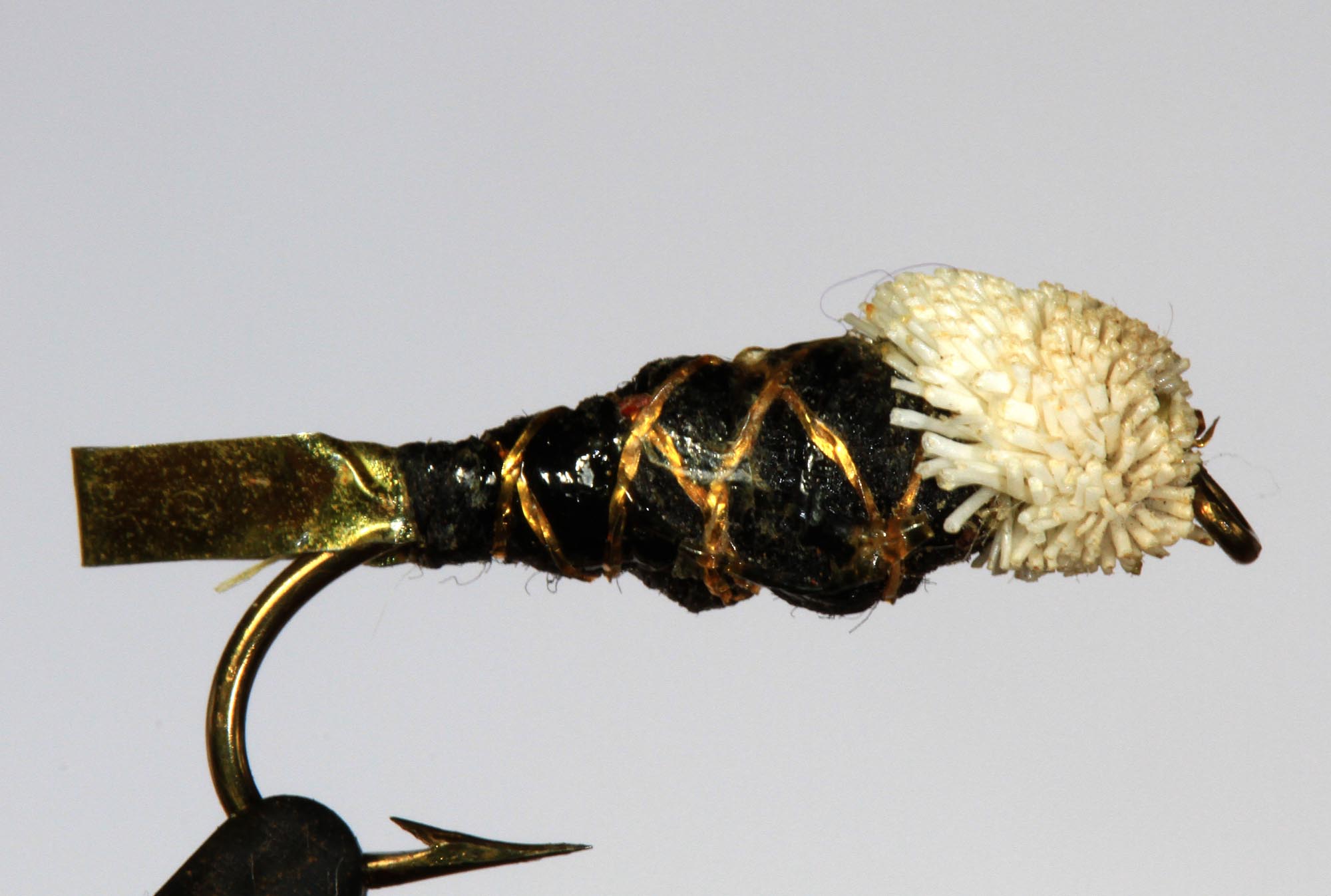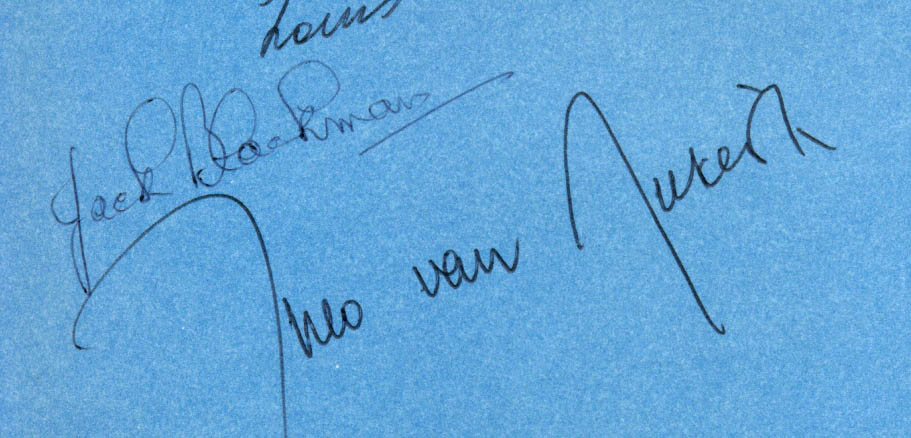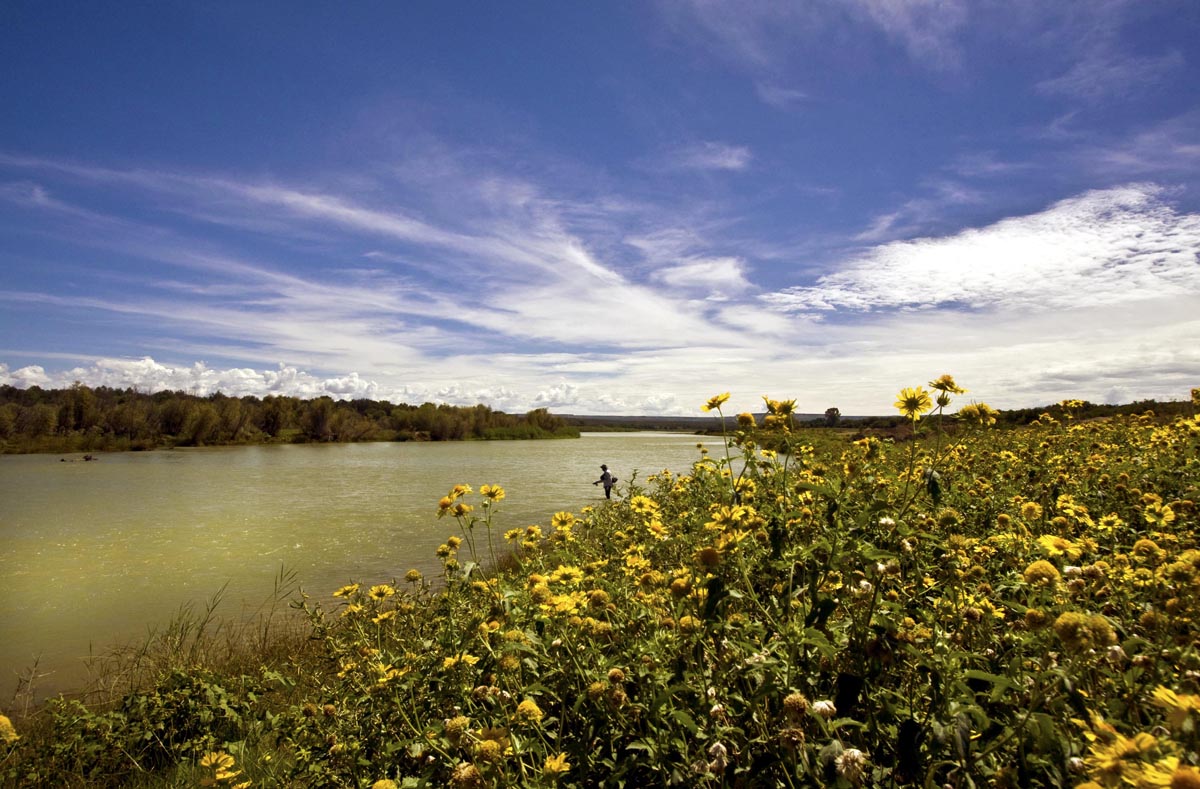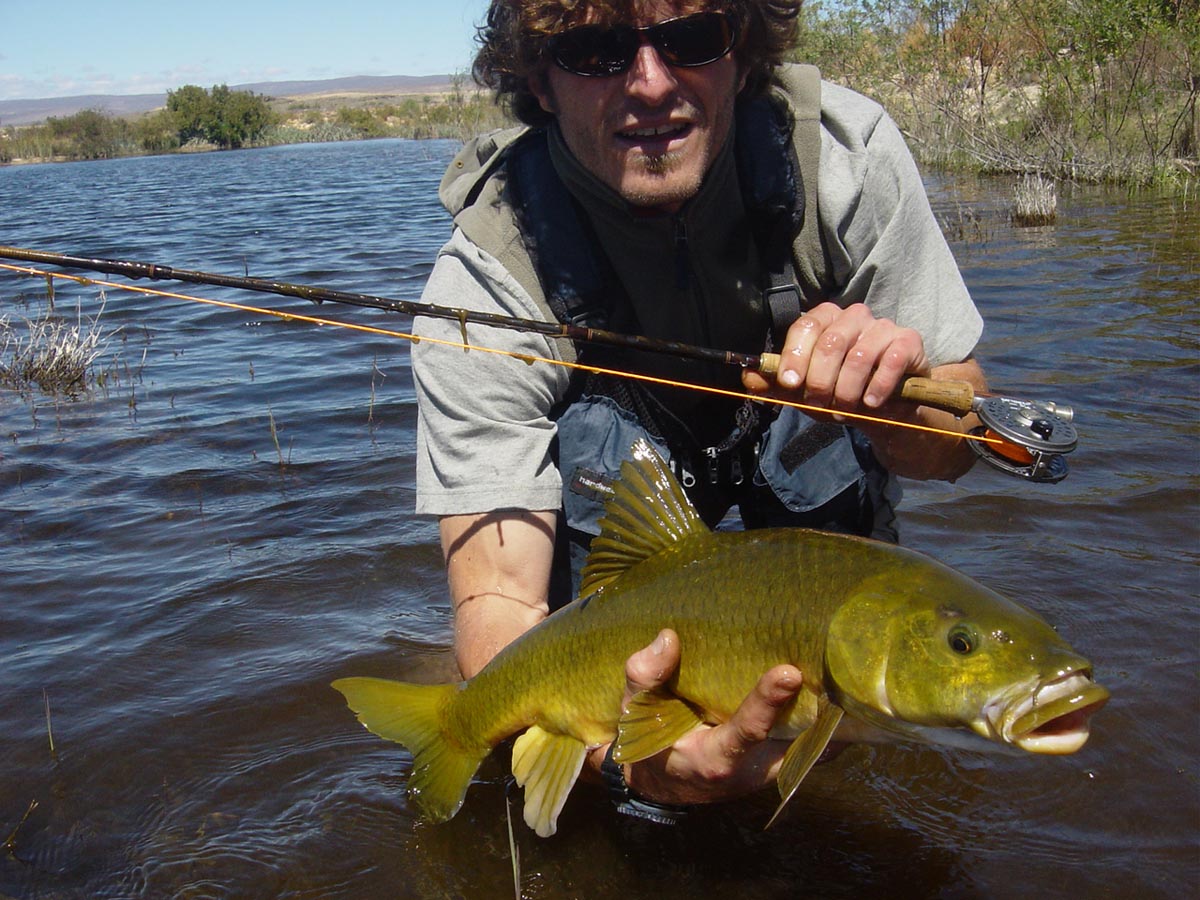SOUTH AFRICA’S “FLY OF THE CENTURY”
Research and text by Ed Herbst
“The greatest discovery in South African angling in the past fifty years is that the yellowfish Barbus Halubi can be caught relatively easily on the fly as long as you know how.” That was the headline on the cover story in the February 1985 issue of the magazine Tight Lines/Stywe Lyne.

The cover picture showed Theo van Niekerk holding a yellowfish which had been caught on a fly – something which had been considered impossible up to then because the prevailing belief was that they could only be caught on bait.
“Theo van Niekerk of Pretoria, a keen fly fisher who has caught many trout on fly, has made a major breakthrough. During the past Xmas holiday season he caught 240 yellowfish on fly in the Vaal River 20 kms downstream of Parys.
'The average weight of the Yellowfish was 1 kg and the heaviest was 3.4 kg. His best catch was 34 in one day: ‘I have never had such a wonderful day’s fly fishing. And to think that, in the past, I have driven many kilometres to fish for trout when, in the Vaal River which flows past my farm, a substantially more powerful sporting fish can be caught on fly,” the article said.

Tha Vaal above Standerton on Tweedronk Guest farm
Two factors contributed to this breakthrough. The first was the opening of the Grootdraai Dam at Standerton which acted as a filter, allowing much of the silt which made the Vaal River turbid to settle out. The second was the experiments of Van Niekerk, an extremely competent and versatile angler. He represented Northern Transvaal in rock and surf angling from 1975 to 1987, was provincial light tackle champion for nine years and was a founder member of the Pretoria Spinfishers.
Van Niekerk described his breakthrough in a chapter, “The Yellowfish Challenge” in the book Fresh and saltwater Fly Fishing in Southern Africa by Charles Norman (Chris van Rensburg Publications (Pty) Ltd) 1987.
“On many occasions I would remark to fellow trout anglers what a pity it was that the small mouth yellow would not take a fly. This fact, however, did not stop me trying a variety of flies for them, but I was never successful.
“I read of other anglers catching yellows on flies, and made long journeys to fish with these anglers who claimed to have found the secret. But even here I was not successful, and neither were the 'experts' when I fished with them. After several years of trying I still had not caught a single yellow on fly. My doubts that it could be done turned to near certainty, but still from time to time I'd try again. And fail again.
“More years went by, and I found myself concentrating my fly fishing efforts on trout.
“But every year during the December holidays I pitched camp on the banks of my beloved Vaal River to enjoy a few weeks of wonderful bait fishing. A trout rod was always kept at hand in the boat, though I had begun to wonder why I bothered.
“And then one day it happened. That day will remain in my memory as long as I live. I'd had a good morning's fishing and was returning to camp, guiding my canoe through the rapids when I saw the shoal of yellows feeding in the shallows. The water was very clear. I stopped and anchored my boat. I took the fly rod and selected a No. 6 Jersey Herd fly.

The Jersey Herd
“My first cast was a metre above the shoal. As the fly drifted past them I waited in anticipation. Nothing happened. I made another cast, and the fly landed in the middle of the shoal. For a split second the fish stopped their feeding movements, then suddenly there was a splash of water and the loose line became tight. The fight was on!
“I prayed that this should not be a foul hook, because the fish was fighting with such ferocity. I took every precaution to make sure I landed it, and when I did I found the hook deep in its throat. I realised my hands were shaking. This was not because it was a big fish - it weighed less than a kilo - but because it was my first yellow on a fly. I knew that my angling life would never be the same again, and the years since then have proved me right.
“That day I arrived back at camp much later than usual. But I had four yellowfish to my credit. Nothing big enough to boast about, but I'd proved to myself it could be done. Many experiments followed. Most were failures, but something had changed within me. No longer did I get discouraged, even though it takes great self-discipline to keep on trying when nothing is taking your fly, while your fellow bait fishermen are catching bag limits.
“But I persevered, and the final results were to prove more satisfying than I could have imagined in my wildest dreams.”
Theo’s success was based on locating actively feeding fish in shallow, clear water, stalking them and presenting the fly with an upstream dead drift.
Initially his most successful fly was the Jersey Herd, an attractor rather than an imitative pattern which used the material from a gold milk bottle top, and which was introduced to fly fishers in 1952 by UK angler Tom Ivens in his book, Stillwater Fly Fishing.
“In the course of my experiments I tried many flies, some home-made and others commercially tied. The most consistent producer remained the Jersey Herd, but even this was only intermittently successful. I knew there had to be something better for yellowfish, it was just a question of finding it. I now realised that the ultimate yellowfish fly did not exist amongst the recognised flies, and I concentrated on experimenting with patterns of my own.
“By 1983 I was tying a fly which up to this point is still the best yellowfish fly available. I have supplied many of my friends with these flies and the feedback has always been a story of success. The basic colours for this fly are black and white with fairly heavy gold ribbing, the size of the fly depending on water volume and colour; the quieter and clearer the water, the smaller the fly.

An original TVN nymph tied by Theo Van Niekerk himsef
That fly was to become known as the TVN nymph and it imitated a fresh water mussel, Corbicula fluminalis, found in the Vaal River.

Corbicula fuminalis per Dr Graham Avery
It was to have a profound impact throughout the country and its influence endures to this day – not because of its intrinsic qualities as a fly or because it possessed any specific powers of attraction, but because it changed a mindset. Not for nothing did the February 1985 issue of Tight Lines/Stywe Lyne describe Van Niekerk’s pioneering experiments as the most important discovery of the previous half century.
By the time Van Niekerk died on 6 November 2003 fly fishing for Yellowfish was practised throughout the country and anglers sought to catch all six yellowfish species found in South Africa. (There are six species and three sub-species, making nine in all).

Another variety of the TVN nymph tied by Theo
Johannesburg probably had as many fly shops in its CBD as any other city in the world and this was founded almost entirely on the fact that not only could Yellowfish be caught in the Vaal River about 90 minutes away but in small streams in the city’s suburbs.
I met Theo in 1994 when, as television news reporter for the South African Broadcasting Corporation, I covered the country’s first democratic election in Kimberly. When I got to Kimberly, I contacted Charl du Plessis, an acknowledged expert at catching Yellowfish on the fly and it was at his home that I met Theo. Theo was subsequently to autograph my copy of Charles Norman’s book – to which I contributed a chapter on small stream fly fishing for trout – and his signature is reproduced here.

Sadly, the fishing which Theo experienced in 1985 is very much a thing of the past. Industrial and human pollution has impacted heavily on fish stocks and often makes angling untenable. A greater, looming threat is the possibility of mining licences being granted in the river’s catchment area.
But, further afield, the Yellowfish provides outstanding angling as Tom Sutcliffe and Darryl Lampert will attest after a trip to the Orange River.

Darryl Lampert fishing the Orange River with Ton Sutcliffe

The Yellowfish is also an outstanding stillwater quarry and the fishing at Sterkfontein Dam about four hours drive from Johannesburg and Durban has been described by foreign fly fishers as outstanding.

Yellowfish from Sterkfontein Dam - Photo per Gerhard Laubscher
In next week’s Friend's Columns, Charl du Plessis will describe how to tie the TVN Nymph and other flies tied by Theo himself will illustrate the article.
Ed Herbst
The Yellowfishes of South Africa:
Yellowfish belong to the large cyprinid family and are the largest, scaled freshwater fish of South Africa. Of the nine species present, three are described as threatened or vulnerable -L. capensis, B. serra, and B. andrewi while L.kimberleyensis must be approaching this status.
Six of the nine species are true yellowfishes (genus Labeobarbus) while the other three are related species which are loosely termed yellowfish (genus Barbus).
The true yellowfish are:
Orange-Vaal smallmouth yellowfish - Labeobarbus aeneus
Orange-Vaal largemouth yellowfish - Labeobarbus kimberleyensis

Clanwilliam yellowfish - Labeobarbus. capensis

Chris Bladen with a Clanwilliam Yellowfish
Lowveld largescale yellowfish - Labeobarbus marquensis
The three related species are:
Clanwilliam sawfin - Barbus serra
Berg-Breede River -whitefish - Barbus andrewi
Bushveld papermouth - Barbus rapax.


